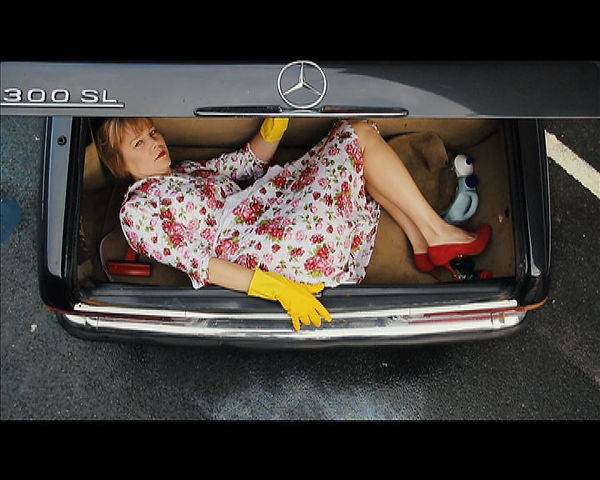2015
RIMADELL
Manon Xhaard & Noah Wiegand
Lorris Coulon
Julien Creuzet
Shahar Marcus
Mehryl Levisse
Jemima Burrill
In Breton, rimadell means a nursery rhyme, tale, or rhymed composition. What is involved in this programme is stories, recited stories and ritornellos (refrains and instrumental interludes).
Manon Xhaard & Noah Wiegand
Uccello, 2012, 15 mn 38

A character wearing a primitive mask, decked out like a shaman holding a thyrsus (a Bacchic staff) in his hand is travelling through landscapes devoid of any human presence, referring to a kind of “pre-historic time”. On his initiatory path, he comes upon a Dervish dance, and has a dreamlike encounter with a philosopher owl, somewhere between a clay sculpture and waves… Uccello, in his cry, is an enigmatic fable which, with a desperate wit, conveys the intrinsic aspects of the human condition. Such a quest is futile, and we should make the most of the pleasures offered by life in the present.
Lorris Coulon
Il s’appelle Pégase, 2013, 10 mn 36

I attempt to capture the time and space of a person, a situation, and a place, to try and reveal something special and unusual. In Benin, a young fisherman has to choose between love and friendship; the calm waters of the mangrove and the endlessness of the ocean. LC
Julien Creuzet
J’ai fait plusieurs fois le même rêve, je dérive, je drive. (...), 2014, 8 mn
Courtesy Galerie Dohyang Lee

He brandishes a hologram plastic map, a seascape painting in front of the camera. We are surrounded by the noises of a tropical night, then a voice recites a poem: “I thought that Creole is being, Everything.” We can still hear the sea’s breakers, and the map continues to undulate before our eyes. Another voice appears, is doubled, and moves away as if in an infinite reverberation. R ’n B beats glorify this dream, we come back to the eternal present. It is the story of a Creolization. JC
Shahar Marcus
Seeds, 2012, 5 mn

The video work Seeds deals with mines that are still buried in the ground after the war was over. From a beautiful top-shot the camera follows three professional mine-removers. They move slowly in meditative movement in a no men’s land desert. They look for mines, find some and remove them. This act leaves a visible trail which the artist, dressed as a pioneer, follows, while sowing seeds, from a small bag (refers to Millet famous painting) on the same track the mines were removed from. The sowing as a healing gesture suggests a new hope to come. SM
Mehryl Levisse
Risque de schizophrénie en fin de journée, 2014, 2 mn 50

Risque de schizophrénie en fin de journée/Risk of Schizophrenia at Day’s End is a behind closed doors, an absurd behind closed doors, oppressive, folkloric, and timeless, in which the body is exposed in its most complete humanity. As beautiful as it is grotesque, as touching as it is pathetic, as male as it is female, even though incarnated only by men. I regard this body as neutral, freed from the issue of gender. It is something in between, neither masculine nor feminine, neither gendered nor genderless, and, conversely, both. ML
Mehryl Levisse
Risque de schizophrénie en fin de journée, 2014, 2 mn 50

A woman gets out of the boot of a car, wearing an apron and rubber gloves. She walks towards the carwash attendants and is hoovered, soaped, sprayed, and rollered and then blown dried. With a self-reflective intention, Burrill describe her constant preoccupation with inappropriate behaviour, sometimes humourous, sometimes disturbing; always trying to push the boundaries of her environments using a solitary protagonist. She examines stereotypes and looks at what woman can be and maybe what they want to be, whilst raising questions about how we see ourselves. The carwash becomes a theatre for the woman to be transformed, although the outcome is not totally expected. JB
